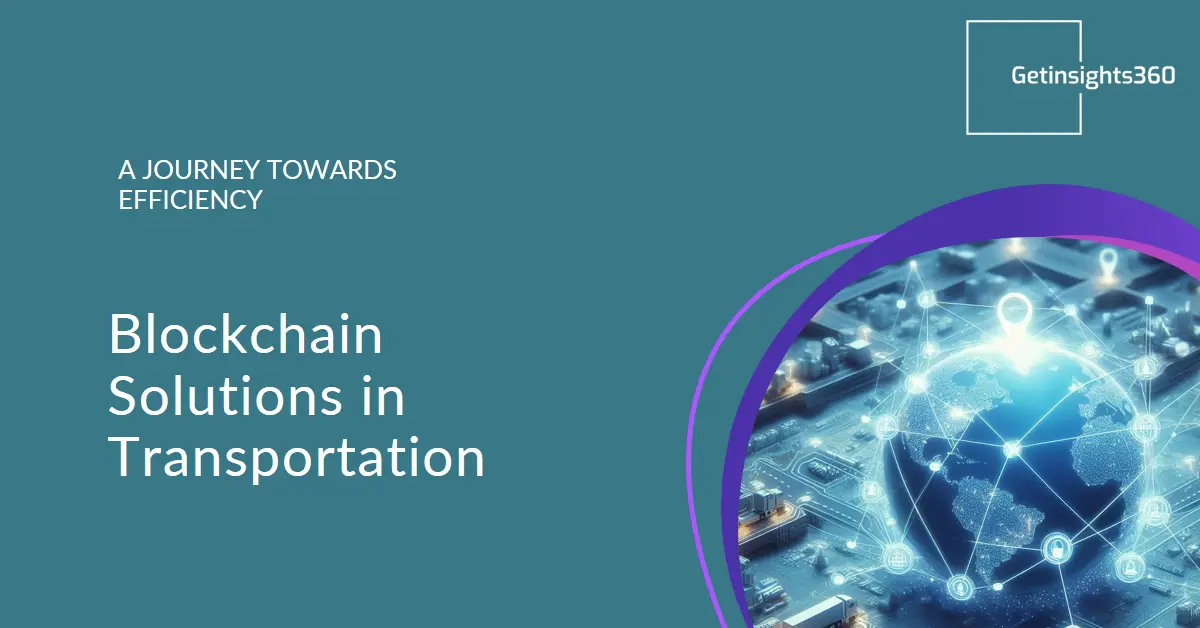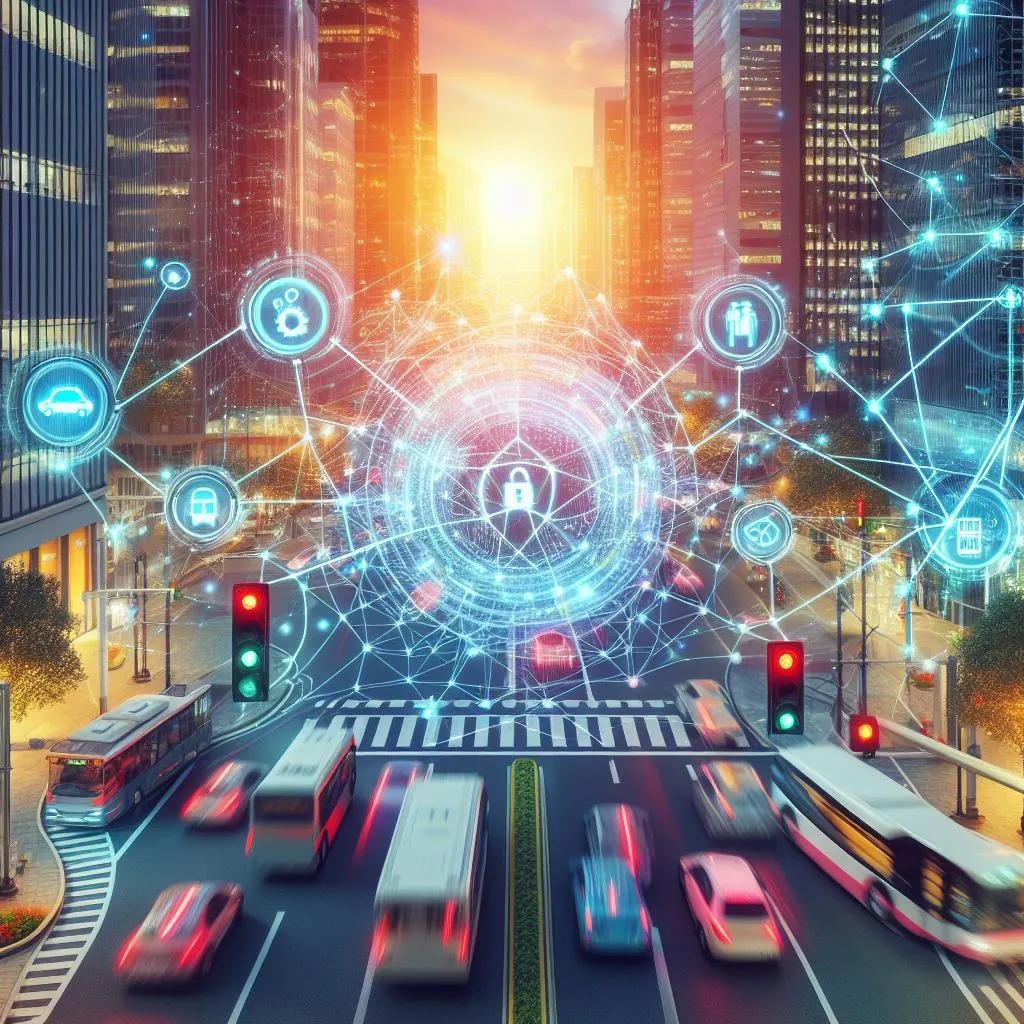
On the Move: A Journey with Blockchain Solutions in Transportation
In the bustling streets of our cities, where cars honk and buses rush by, a quiet revolution is taking place. It’s not just about getting from point A to point B anymore; it’s about how we do it—smarter, safer, and more seamlessly than ever before. And at the heart of this transformation lies a technology you might not expect: blockchain.
Let’s take a journey together through the streets, highways, and railways, exploring how blockchain solutions are reshaping the way we move and the world around us.

Imagine you’re stuck in traffic, impatiently tapping your fingers on the steering wheel. You glance at your GPS, hoping for a quicker route, but it’s no use—the roads are jammed with cars. But what if there was a way to ease this congestion and make your commute smoother?
Enter blockchain. It’s like a digital highway where information flows securely and efficiently, without any traffic jams or detours. With blockchain, traffic data—from congestion levels to road closures—is stored in a decentralized network, accessible to everyone in real-time. So instead of relying on outdated maps or unreliable apps, you can trust that your navigation system will guide you to your destination with precision.
But blockchain’s impact goes beyond just easing traffic. Picture this: you’re at the bus stop, waiting for your ride to arrive. Normally, you’d fumble for change or try to find your bus pass, but not anymore. With blockchain-powered ticketing systems, all you need is your smartphone. Just tap, pay, and board—all seamlessly integrated into one convenient app.
As you settle into your seat, you notice something different about the buses around you—they’re all electric. That’s because blockchain technology has made it easier for cities to transition to greener, more sustainable transportation options. By securely tracking the supply chain of electric vehicles and their components, blockchain ensures transparency and accountability every step of the way, from manufacturing to maintenance.
But the benefits of blockchain don’t stop there. Imagine a world where trains, buses, bikes, and even scooters work together seamlessly, like pieces of a well-oiled machine. That’s the vision of multimodal transportation, where different modes of transit complement each other to provide a seamless journey from door to door.
With blockchain, this vision becomes a reality. Smart contracts—self-executing agreements coded into the blockchain—facilitate seamless transfers between modes of transportation, automatically adjusting schedules and fares to ensure a smooth transition. So whether you’re hopping off the subway and onto a bike or switching from a bus to a rideshare, the entire process is frictionless and effortless.
As you travel through the city, you can’t help but marvel at the interconnectedness of it all. From traffic lights that communicate with each other to optimize traffic flow to autonomous vehicles that navigate the streets with precision, blockchain is the invisible thread tying it all together.

But perhaps the most profound impact of blockchain is its ability to empower individuals and communities. In a world where data is king, blockchain puts the power back into the hands of the people, allowing them to control their own information and identities securely and privately.
Take, for example, the issue of mobility data sharing. Traditionally, companies collect vast amounts of data about our travel habits, from where we go to how we get there. But with blockchain, individuals can choose to share their data selectively, earning rewards or discounts in return. It’s a win-win for everyone—companies get the insights they need to improve their services, while individuals retain ownership and control over their personal information.
As you reach your destination and step off the bus, you can’t help but feel optimistic about the future of transportation. With blockchain leading the way, our cities are becoming smarter, more efficient, and more sustainable than ever before. And as we continue on this journey together, one thing is clear: the road ahead is paved with endless possibilities.
- Blockchain for Road Maintenance: Imagine driving down a smooth, pothole-free road. With blockchain technology, municipalities can track road maintenance schedules, repairs, and inspections in real-time, ensuring safer and more reliable infrastructure for commuters. Smart contracts can automatically trigger maintenance tasks based on predefined conditions, reducing delays and minimizing the risk of accidents caused by deteriorating road conditions.
- Enhanced Safety and Security: In a world where cybersecurity threats are ever-present, blockchain offers a robust solution for protecting sensitive transportation data. By encrypting information and distributing it across multiple nodes, blockchain reduces the risk of data breaches and cyberattacks. This enhanced security not only protects commuters’ personal information but also safeguards critical infrastructure systems from malicious actors.
- Streamlining Freight Transportation: Beyond passenger travel, blockchain technology has the potential to revolutionize freight transportation and logistics. By digitizing shipping documents, tracking cargo movements, and automating customs clearance processes, blockchain simplifies the complex supply chain operations, reducing administrative costs and transit times for businesses. The result is a more efficient and transparent freight transportation system that benefits both shippers and consumers.
- Empowering Decentralized Mobility Services: With the rise of decentralized mobility services like ride-sharing and bike-sharing platforms, blockchain offers a decentralized platform for connecting service providers and users directly. Smart contracts can automate payment transactions, enforce service agreements, and ensure fair compensation for providers, eliminating the need for intermediaries and reducing transaction costs. This decentralized approach empowers communities to take control of their mobility needs while fostering innovation and competition in the marketplace.
- Promoting Equity and Accessibility: In many cities, access to reliable transportation remains a significant barrier for underserved communities. Blockchain technology can play a role in addressing this challenge by enabling decentralized ride-sharing and micro-transit solutions tailored to the needs of local communities. By leveraging blockchain-powered mobility platforms, individuals can access affordable transportation options, regardless of their socioeconomic status or geographic location, promoting equity and accessibility for all.
- Fostering Collaboration and Innovation: The beauty of blockchain lies in its ability to foster collaboration and innovation across industries and stakeholders. Through public-private partnerships and collaborative initiatives, governments, businesses, and technology providers can work together to co-create and implement blockchain solutions that address the unique challenges facing transportation systems worldwide. By harnessing the collective expertise and resources of diverse stakeholders, we can unlock new opportunities for transformative change and shape the future of transportation for generations to come.
Conclusion
As we conclude our journey through the transformative power of blockchain in transportation, it’s clear that we’re standing at the threshold of a new era in mobility. From easing traffic congestion and enhancing safety to promoting sustainability and empowering communities, blockchain solutions are reshaping the way we move and interact with our transportation systems.